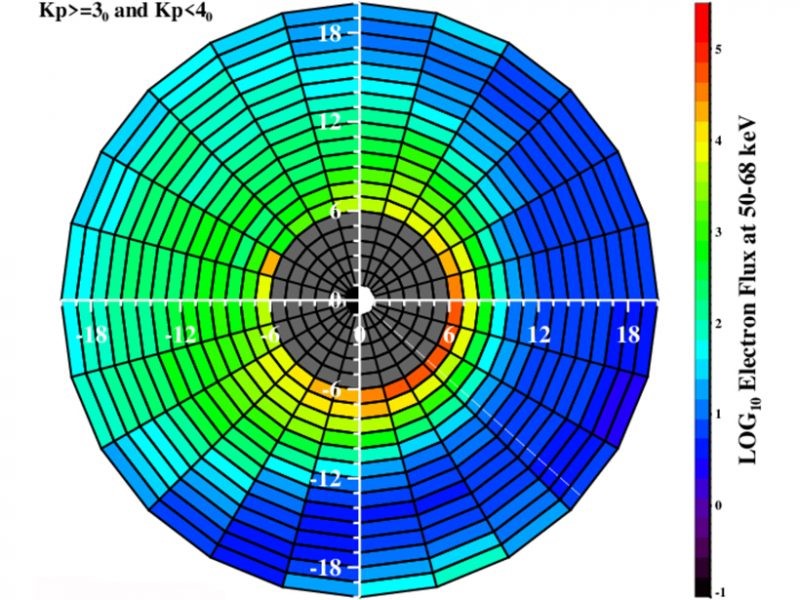Editor's Highlight
本周内容为AGU(American Geophysical Union)最新发布的Editor's Highlight和国外学习工作机会!
Extending the Envelope for Known Safe Locations in Space
When unattached electrons collide with spacecraft, the build-up of electric charge can cause malfunctions, but recent observations model near-Earth regions that are likely safe zones.
Source: Space Weather

An equatorial-plane map of flux of ~60 keV electrons during moderate levels of geomagnetic activity. Earth is at the center of the map, with the white semi-circle indicating the sunlit side. The model covers the region where measurements are less routine, from about six Earth radii (RE) outward to 20 RE. The gray zone is not part of the study. Orange and red colors indicate relatively high electron fluxes. The color bar is on a logarithmic scale covering six orders of magnitude. Credit: Denton et al. [2019], Figure 5 top right panel
Most operational spacecraft orbit Earth within 7 Earth radii. Over recent decades, a few research missions have sampled the plasma and energetic particle environment out to 20 Earth radii. From the limited (but growing) number of observations beyond geosynchronous orbit, Denton et al. [2019] have created an empirical model from the CLUSTER mission, a quartet of orbiting spacecraft with identical instruments.
This model supports prediction of electron flux in the energy range ~45 eV to ~325 keV, as a function of local-time and radial distance from the Earth near the equatorial plane. This is a key energy band associated with spacecraft charging. The model is parameterized by a geomagnetic activity index (Kp index) that ranges from 0 to 9. This new model supports international efforts in benchmarking extreme particles fluxes that may damage spacecraft or individual space-based instruments.
Citation: Denton, M. H., Taylor, M. G. G. T., Rodriguez, J. V., & Henderson, M. G. [2019]. Extension of an empirical electron flux model from 6 to 20 Earth radii using Cluster/RAPID observations. Space Weather, 17. https://doi.org/10.1029/2018SW002121
—Delores J. Knipp, Editor in Chief, Space Weather
国外学习机会
1. Postdoctoral Fellow, FL Coastal Center for Human Health
Fort Pierce, Florida
Florida Atlantic University
https://findajob.agu.org/job/8010789/postdoctoral-fellow-fl-coastal-center-for-human-health/
2. Data Engineer - Data Curator - Data Manager
Albuquerque, New Mexico
Sandia National Laboratories
https://findajob.agu.org/job/8010778/data-engineer-data-curator-data-manager/
3. Assistant Professor of Hydrogeology & Environmental Geology
Albion, MI
Salary negotiated.
Albion College
https://findajob.agu.org/job/8010783/assistant-professor-of-hydrogeology-and-environmental-geology/
Fort Collins, Colorado
The annual salary will be about $63,000 with a benefits package.
Natural Resource Ecology Laboratory
https://findajob.agu.org/job/8010785/ecosystem-modeller/?LinkSource=PremiumListing



